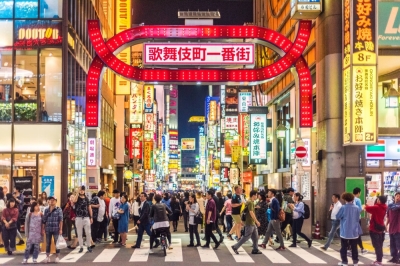This is a sponsored story, created and edited exclusively by Tokyo Metropolitan Government’s Tokyo Updates website.
Buddhism is one of Japan's leading religions, second only to Japan's native Shintoism. In Buddhism, the goal is to attain enlightenment and liberation (nirvana) by practicing the teachings of the Buddha, who himself achieved enlightenment by sitting in meditation under a bodhi tree. Thousands of years later, in Japan the practice continues under the name "zazen."
Zazen (seated meditation) is the Japanese term coined for a practice that originated in India, flourished in China, then arrived in Japan in the early 13th century. To date, it continues as a practice of Zen Buddhism in Japan, and, in the 20th and 21st century, it has gained enormous popularity in the West.
One notable figure that was influenced by Zen Buddhism and zazen was Apple Founder Steve Jobs. A seeker of spirituality for much of his life, his interest in zazen and Zen philosophy is well noted. Following his death in 2011, many outlets published articles on his connection to Zen Buddhism, fueling interest in zazen in the West.
Today, zazen and other mindfulness exercises, such as meditation and journaling, are practiced across the globe as individuals seek to improve their overall mental health. While there are many ways to practice mindfulness alone, in Japan, the home of zazen, you can take the opportunity to learn from a master in Buddhist temples such as Tokyo's Ryuunji Temple.
Focusing on the now
Ryuunji Temple high priest Kensyo Inada explained, "zazen is one of the ways to experience Zen. It is a way of sitting down to relax the body and to prepare the mind by slowing down the breathing." In zazen there is a specific way to sit. You can opt for the kekka fuza (full lotus) or the hanka fuza (half lotus). You sit upright, with a cushion elevating your hips. The crown of your head should reach up and your hands can be placed in your lap.
Once seated, you aim to focus your attention, looking down at the ground and focusing on simply breathing in and out. "We usually get about 80 percent of our information via our sight," Inada explained, "we can end up relying too much on them. Zazen is useful for shifting that focus to the other parts of the body."
That shift often brings to the fore senses of discomfort, especially in the legs and feet. According to Inada, "zazen is not about hurting your body, but it is good to feel the numbness in your legs. We humans have a habit of seeing something with our eyes and automatically thinking about it. However, in this instance, you intuitively sense the pain before thinking about it. It is very important to feel things, to feel the sensations in our body, even if it is pain."
While meditating, it is not uncommon to lose focus, or even drift off to sleep. To combat this the monks will strike those meditating on each shoulder blade with a stick called keisaku. When the time comes, the priest will approach you and you will bow to one another to show readiness. You then cross your arms across your chest and bend forward to receive the strikes. The strikes are not too hard, just enough to sharpen your focus.
Teaching the way of zazen
When asked what one gains from practicing zazen, Inada replied, "It is said that there is nothing to gain in zazen. It is not an act of getting something, but of letting go. I would venture to say the benefit is that it becomes easier to let go of the heavy things that each person has, one by one."
This sentiment tends to strike a chord among those who feel pressured to constantly accumulate, whether it be skills, knowledge, experiences, or material possessions. The act of letting go may sound sad but is also liberating. "People are creatures who hold on to too much of both good and bad things, and they become heavy," he continued, "that is why we relax and lighten the load first."
This is the exact concept the Tokyo Zen Center, who opened their doors in 2005, wishes to share. Their headquarters are located right next to Ryuunji Temple which is used for many of their zazen experiences. The experience is open to all, with Inada stating, "We have people of all genders and ages; the youngest is a kindergarten child who comes with her mother; the oldest is a grandmother in her 80s who has been coming for a while and is a regular." It is held every Tuesday and often has between 15 to 20 participants each time.
The temple also invites tourists and international residents to join as well, "We often get around two to three international visitors, but sometimes we get groups." The novelty of experiencing zazen in the atmosphere of a temple is a huge draw for many, but Inada believes participants leave having felt something deeper, even if they can not put it into words.
When asked if you can join even if you are not Buddhist, Inada responded, "Of course you can. The basic idea is to share what we can do together while respecting the beliefs of each individual."
In a city as busy as Tokyo, with lives filled to the brim with an endless stream of things to do and think about, Inada believes that zazen can be extremely beneficial. "It is the act of putting a period on a sentence. You take a break from something, put a period, and then start a new sentence." For many, stopping, resetting, and then moving on can be invaluable for mental health and ultimately moving forward with a clearer understanding of oneself.























With your current subscription plan you can comment on stories. However, before writing your first comment, please create a display name in the Profile section of your subscriber account page.